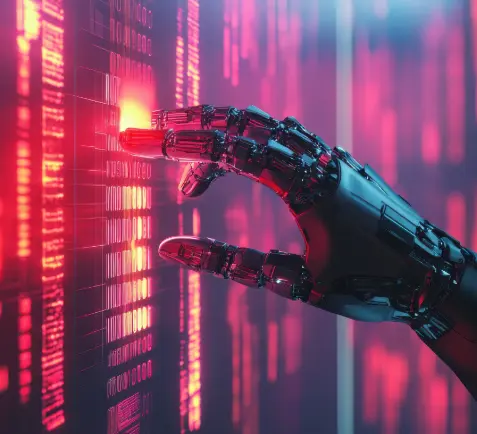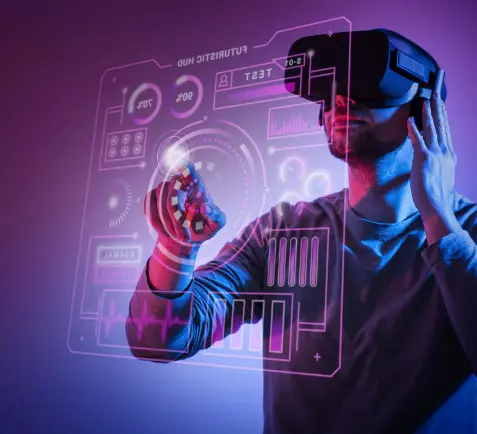Remember the movie Avatar? Where everything was literally connected—the Na’vi, trees, animals, and even the planet itself. They were all part of an interconnected network called Eywa, where life flowed together in perfect harmony. No miscommunication, no missing links—everything was synced, smooth, and magical. Maybe James Cameron was hinting at something bigger, like the future of how ecosystems—especially in healthcare—could work.
What if our healthcare system operated like that? A unified ecosystem where every doctor, hospital, pharmacy, and health insurance plan is perfectly synced. No more chasing down medical records or repeating your history to yet another specialist. Instead, everything flows together like it’s all part of one magical network, where every piece of information is instantly accessible and ready when you need it.
Why Do We Need a Unified Healthcare Ecosystem?
The idea of a new universal healthcare ecosystem seems great, but why is it needed? In the current system, one department might have your medical insurance details, while another struggles to access it. This can become a challenge, especially in emergencies. Traditional healthcare systems are often disjointed. Imagine if all departments, your wearable device, and your favorite pharmacy could talk to each other instantly. This is the promise of a unified ecosystem—it’s not just a matter of convenience but also of life and efficiency.
The Critical Need for This Shift
Here are a few reasons why this shift is not just necessary but overdue:
• Data Everywhere, But None to Use: In a traditional system, siloed information fragments healthcare. Studies show that healthcare professionals spend up to 50% of their time on redundant tasks or trying to access the right data (McKinsey, 2023). Unified ecosystems eliminate this by enabling real-time data access, thus improving healthcare solutions.
• Reducing Hospital Readmissions: According to the CDC, 20% of Medicare patients are readmitted to hospitals within 30 days. A unified system can prevent this by enabling remote patient monitoring and follow-up care, drastically improving patient outcomes.
The New Unified Healthcare Ecosystem
Here’s what happens in a unified ecosystem:
• Seamless Data Exchange: Your health data—whether from your smartwatch or your last hospital visit—is easily accessible to healthcare professionals. Unified Health Records (UHR) serve as a key platform, aggregating real-time data to create a 360° view of the patient. This leads to more accurate diagnoses and better care plans.
• Predictive & Preventive Care: With AI and machine learning, unified ecosystems analyze data to identify early warning signs. This enables preventive care, a hallmark of the new system, shifting healthcare from reactive treatments to proactive interventions.
• Personalized Medicine: Tailoring care plans based on individual data—like genetic information—becomes easier. This enhances health outcomes, reduces unnecessary procedures, and ensures that treatment plans are more precise.
The Future of Unified Healthcare Ecosystems
The benefits of a unified ecosystem in healthcare are clear. From cost reductions to improved patient outcomes, the ripple effects are enormous. But it doesn’t stop there. Imagine a future where:
• AI becomes your primary health assistant, flagging potential issues before you even notice them.
• Virtual healthcare checkups allow you to skip the waiting room and still get top-notch care.
• Wearable tech tracks your vital stats and automatically syncs them to your doctor’s dashboard.
Unified systems not only bring better care but also present a massive economic opportunity. According to EThealthworld, the healthcare sector could generate over 500,000 new jobs per year, as this new system will need more data analysts, AI specialists, tech developers, and healthcare professionals to manage and expand its capabilities.
The government’s initiative on the National Digital Health Mission (NDHM) is a step in the right direction, aiming to digitize health records and create an interconnected healthcare network across the country. With this initiative, India is moving toward a more efficient, transparent, and patient-centered healthcare system.
Imagine a world where your fridge reminds you to eat healthier, and your couch tracks your sitting habits! With the Internet of Things (IoT) in unified ecosystems, this isn’t far-fetched. Devices in your home can be part of your health monitoring journey, reporting real-time data back to your healthcare provider.
Conclusion: The Ecosystem of Tomorrow—Driving Employment and Innovation
A unified healthcare ecosystem is more than just a tech upgrade—it’s a paradigm shift with wide-reaching effects. It transforms the current maze of healthcare into an organized, collaborative environment where the patient is at the center, communication is seamless, and data flows efficiently. But beyond the benefits to patient care, this ecosystem is set to bring about a massive economic boost.
From data scientists and AI specialists to healthcare professionals trained to use advanced systems, this unified ecosystem has the potential to create over 500,000 new jobs annually. The ripple effects of this transformation will extend to industries such as technology, pharmaceuticals, and insurance, driving further innovation and collaboration.
So, let’s Welcome the future of healthcare, where care is not just efficient but innovative, creating both better health outcomes and new opportunities for everyone involved.
Further Readings: Is AI Ready To Replace Your Doctor?
Knowledge thats worth delivered in your inbox




